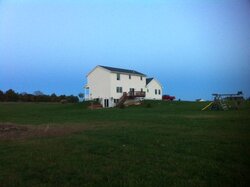Welcome to the forum Leslie.
Congratulations on the stove and you will love the wood heat! You will also learn on here the best way to distribute that heat which is really simple once you learn the little trick. I would like this post though to be on your wood supply.
First, realize that most stoves today are much different than the older stoves and you really do need good dry wood to burn right. If you have good wood, you'll have good results. Poor wood with get the opposite. One big thing to be concerned about is creosote and bad wood will get you plenty of that and the possibility of chimney fires. You do not want this and you do not have to have it. Just make sure on the fuel and learn good burning habits. We've burned wood for a few years now (check the signature line below) and have never had a chimney fire nor do we ever expect to have one. Here is how we do it.
We cut wood in the winter. Usually December through February. We stack it through the winter and after snow melt we do all the splitting before stacking.
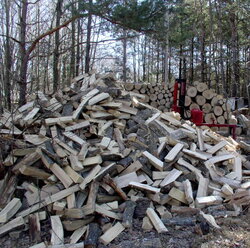
We do have a hydraulic splitter but for many, many moons we split all by hand using axe, splitting maul, sledge hammer and wedges. We got along fine until an injury and we were forced (happily) into buying a splitter. I began smiling when I split the first log with the hydraulics! Wow!
After the wood is split (now it can start to dry), we stack our wood on poles (saplings) that we cut in the woods. Lay down two and stack the wood on them. In a pinch, I'll even lay down some small rounds or even splits to stack the wood on. The big thing is to get the wood off the ground and allow some air under there. Notice in the picture below that the bottom is just some maple saplings we cut in the woods. Gets the wood up and allows some air under.
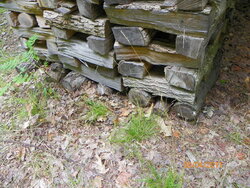
Of big importance is to know your friend and that friend is wind. This is how the wood will dry. Sure, sunshine is nice but not necessary. Many times we stack wood in the shade and it drys very nicely. Air circulation; your friend.
Now you need time. You also need to know there can be a huge difference in the amount of time your wood needs to dry properly. For example, you could cut some soft maple in March, split and stack it right away and it could be ready to burn by fall. On the other hand, you could cut some oak at the same time and be cussing it 2 years later because it is not dry enough. We give oak 3 years before we attempt to burn it. Ash is a big one now because of the damage of the EAB. Ash is a low moisture wood to begin with so it can be ready to burn in a year. But as of late, we are getting some ash that does not need a year because it has been dead so long there is barely any moisture left. But please pay close attention to the wood. Fuel is needed for the cars and fuel is needed for the stove. You want good fuel in both.
This is how we stack our wood. Crib the ends and when done, we cover the top with old galvanized roofing. Remember that when you cover your wood, it is important to cover only the top of the pile. Remember that you need air to dry the wood. If you cover it all, where will the air circulation come from? btw, we do not cover our wood that first summer but usually cover before the snow starts to pile up.
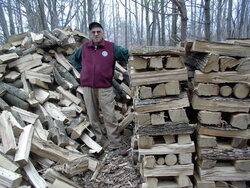
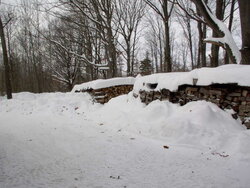
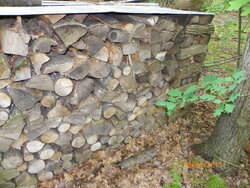
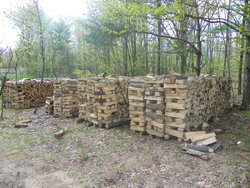
I will close by inviting you into the Wood Shed. That is part of hearth.com and many wood burners post there which is all about the wood. Good luck to you.








 A C
A C